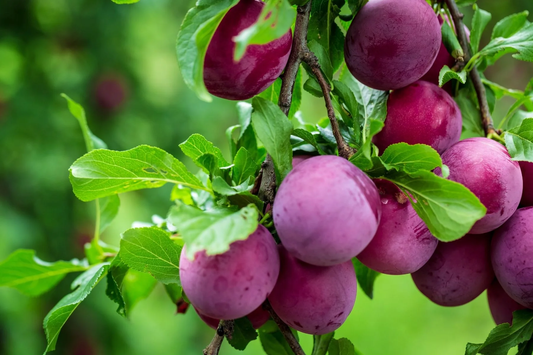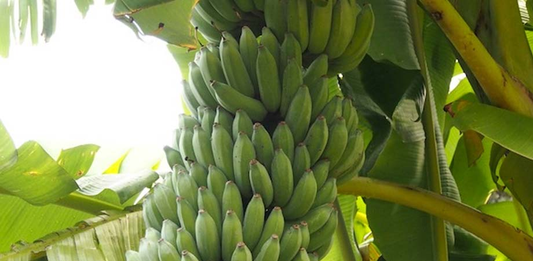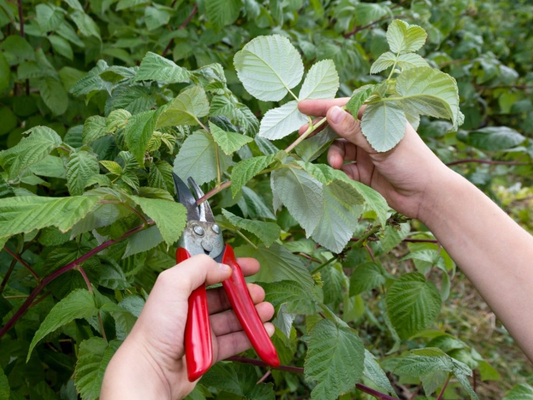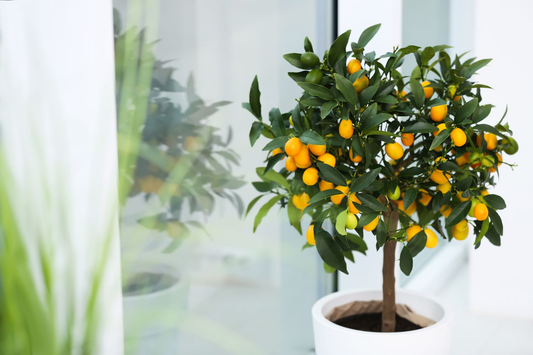Starting a Vegetable Garden: Your Ultimate Beginner’s Guide
Share
Table of Contents
1. Introduction
Starting a vegetable garden can be a transformative experience, offering a myriad of benefits for both your health and well-being. Here are some compelling reasons to consider:
- Fresh Produce: Enjoy the satisfaction of harvesting your own fresh vegetables, which are often tastier and more nutritious than store-bought options.
- Cost Savings: Growing your own vegetables can significantly reduce your grocery bills.
- Environmental Benefits: Gardening promotes sustainability by reducing the carbon footprint associated with transporting produce.
- Physical Activity: Gardening is a great way to stay active, improving physical fitness while you work in your garden.
- Mental Well-being: Spending time in nature and nurturing plants can reduce stress and improve mental clarity.
For many, the motivation to start a vegetable garden stems from a love of nature and the desire to connect with the food they consume. Whether you grew up in a household where gardening was a cherished tradition or are inspired by the idea of self-sufficiency, cultivating your own vegetable garden can bring immense joy. The act of planting seeds, nurturing them through their growth, and finally reaping the rewards can be incredibly fulfilling.
As a beginner, it’s natural to feel a bit overwhelmed by the idea of starting a vegetable garden. However, with a little guidance and the right mindset, anyone can create a thriving garden. Remember, gardening is a journey filled with learning opportunities. Embrace the process, be patient with yourself, and don’t hesitate to experiment. Each season brings new chances to grow, and every small success will inspire you to continue your gardening adventure!

2. Understanding the Basics of Vegetable Gardening
Vegetable gardening involves the practice of growing a variety of edible plants for personal consumption. It allows you to cultivate vegetables, herbs, and sometimes fruits, offering a direct connection between you and the food you eat. Understanding the fundamentals of vegetable gardening is essential for any beginner looking to embark on this rewarding journey.
2.1 Definition of Vegetable Gardening
Vegetable gardening can be defined as:
- The cultivation of plants primarily grown for their edible parts.
- A hobby or lifestyle choice that promotes self-sufficiency and healthy eating.
- A means to explore biodiversity by growing various plant species and varieties.
2.2 Types of Vegetable Gardens
There are several types of vegetable gardens you can choose from, depending on your space and preferences:
-
In-ground Gardens:
- Traditional method where vegetables are planted directly into the ground.
- Best for larger spaces with good soil quality.
-
Raised Bed Gardens:
- Vegetable beds elevated above ground level, typically framed with wood or stone.
- Offers better drainage, improved soil quality, and easier access for maintenance.
-
Container Gardens:
- Vegetables grown in pots, planters, or other containers.
- Ideal for small spaces, patios, or urban environments where ground planting is not feasible.
2.3 Importance of Planning and Preparation
Proper planning and preparation are crucial for a successful vegetable garden. Here’s why:
- Maximizes Space: Effective planning ensures you make the most of your available space, allowing for optimal growth of your plants.
- Enhances Yield: By selecting the right crops and planting them at the appropriate times, you can increase your overall harvest.
- Prevents Common Problems: Planning helps you anticipate challenges, such as pest control, plant spacing, and crop rotation, leading to a healthier garden.
- Time Management: Knowing when to plant, water, and harvest allows for a more organized gardening schedule.
Understanding these basics will provide you with a solid foundation for starting your vegetable garden. With the right approach, you can cultivate a thriving garden that yields fresh, delicious produce for you and your family.
3. Choosing the Right Location
Choosing the right location for your vegetable garden is crucial to its success. The right site can significantly influence the growth and health of your plants. Here are key factors to consider when selecting a garden site:
3.1 Factors to Consider When Selecting a Garden Site
-
Sunlight:
- Most vegetables require at least 6-8 hours of direct sunlight daily for optimal growth.
- Observe your yard throughout the day to identify sun-drenched areas.
-
Drainage:
- Good drainage is essential to prevent waterlogging, which can lead to root rot and other issues.
- Avoid low-lying areas where water tends to accumulate.
-
Accessibility:
- Choose a location that is easy to access for planting, watering, and harvesting.
- Consider proximity to a water source to simplify irrigation efforts.
3.2 The Role of Soil Quality and Testing
Soil quality is a critical factor that affects plant growth. Here’s what to keep in mind:
-
Soil Composition:
- Vegetables thrive in well-draining, nutrient-rich soil with a good balance of sand, silt, and clay.
- Soil texture influences how well it retains moisture and nutrients.
-
Soil Testing:
- Conduct a soil test to determine pH levels, nutrient content, and any deficiencies.
- Soil test kits are available at garden centers or through local agricultural extension offices.
-
Amending Soil:
- Based on test results, you may need to amend your soil with organic matter, compost, or specific fertilizers.
- Improving soil quality enhances plant health and productivity.
3.3 Tips for Assessing Your Yard or Balcony
Assessing your available space is essential for planning your garden effectively. Here are some tips:
-
Observe the Environment:
- Spend time in your yard or balcony at different times of day to monitor sunlight and shade patterns.
- Take note of any obstructions, such as trees or buildings, that may block sunlight.
-
Check for Wind Protection:
- Consider how wind exposure might affect your plants, especially on balconies or exposed areas.
- Planting near walls or using windbreaks can help shield your garden.
-
Evaluate Space:
- Determine how much space you have for planting based on your available area.
- Consider vertical gardening options if space is limited.
By carefully evaluating these factors, you can choose the best location for your vegetable garden, setting the stage for a successful and fruitful growing season.

4. Planning Your Vegetable Garden
Proper planning is essential for a successful vegetable garden. It involves selecting the right vegetables to grow, creating a planting calendar, and understanding essential gardening concepts such as companion planting and crop rotation. Here’s how to effectively plan your garden:
4.1 Choosing the Vegetables to Grow
Selecting the right vegetables for your garden requires consideration of both climate and personal preferences:
-
Climate:
- Research the hardiness zone of your area to determine which vegetables thrive in your climate.
- Consider seasonal temperatures and rainfall patterns when selecting crops.
-
Personal Preferences:
- Choose vegetables that you and your family enjoy eating to make the effort worthwhile.
- Consider growing a mix of fast-growing and long-maturing crops to enjoy a varied harvest.
-
Space Requirements:
- Take into account the space each vegetable requires to grow effectively.
- Plan for vertical gardening options for climbing vegetables like cucumbers or beans.
4.2 Creating a Planting Calendar
A planting calendar helps you stay organized and ensures that you plant vegetables at the right time:
-
Know Your Frost Dates:
- Identify the last frost date in spring and the first frost date in fall for your region.
- Use these dates as a guide for when to start planting seeds indoors or outdoors.
-
Timing for Planting:
- Research the best planting times for each vegetable variety based on its growth cycle.
- Document your planting schedule, including dates for sowing seeds, transplanting, and harvesting.
-
Seasonal Succession:
- Plan for succession planting to maximize your harvest throughout the growing season.
- After harvesting one crop, follow up with another that can thrive in the same space.
4.3 Understanding Companion Planting and Crop Rotation
Incorporating companion planting and crop rotation strategies can improve the health and yield of your vegetable garden:
-
Companion Planting:
- Planting compatible vegetables together can enhance growth, deter pests, and improve flavors.
- Examples include pairing tomatoes with basil or planting marigolds to repel harmful insects.
-
Crop Rotation:
- Rotating crops each season helps prevent soil depletion and reduces the risk of pests and diseases.
- Follow a rotation plan that allows for diversity in plant families across seasons.
By thoughtfully planning your vegetable garden, you can create a thriving space that provides fresh produce throughout the growing season. The right combinations of vegetables, careful timing, and effective gardening practices will set you on the path to success.
5. Preparing the Soil
Preparing the soil is a critical step in establishing a successful vegetable garden. Healthy soil promotes robust plant growth and contributes to higher yields. Understanding the importance of soil health and the proper preparation techniques will set the foundation for your garden.
5.1 Importance of Soil Health and Preparation
Soil health is vital for various reasons:
-
Nutrient Availability:
- Healthy soil provides essential nutrients that plants need for growth.
- Improved soil structure enhances nutrient retention and availability.
-
Water Management:
- Well-prepared soil allows for better water infiltration and drainage.
- Healthy soil retains moisture while preventing waterlogging.
-
Root Development:
- Loose, well-aerated soil encourages strong root growth.
- Healthy roots can better absorb nutrients and water from the soil.
5.2 Steps to Prepare Your Soil
Follow these steps to effectively prepare your soil:
-
Tilling:
- Loosen the soil by tilling or turning it over with a garden fork or tiller.
- Aerating the soil improves drainage and root penetration.
-
Adding Organic Matter:
- Incorporate organic matter such as compost, well-rotted manure, or leaf mold.
- Organic matter enriches the soil with nutrients and improves its structure.
-
Testing pH:
- Conduct a soil pH test to determine the acidity or alkalinity of your soil.
- Most vegetables prefer a slightly acidic to neutral pH (6.0-7.0).
5.3 Recommended Soil Amendments for Vegetable Gardens
Based on your soil test results, you may need to make amendments to optimize soil conditions:
-
Lime:
- Used to raise soil pH if the soil is too acidic.
- Improves calcium content and promotes better nutrient uptake.
-
Sulfur:
- Utilized to lower soil pH if the soil is too alkaline.
- Helps in creating a more favorable environment for certain crops.
-
Compost:
- A valuable amendment that adds nutrients and improves soil structure.
- Enhances microbial activity, promoting a healthy soil ecosystem.
-
Fertilizers:
- Consider adding balanced fertilizers or specific nutrient amendments based on soil needs.
- Organic fertilizers such as fish emulsion or bone meal can provide additional nutrients.
By prioritizing soil health and following these preparation steps, you can create an ideal environment for your vegetables to thrive, leading to a successful harvest.

6. Planting Your Seeds and Seedlings
Planting seeds and seedlings is a crucial step in establishing your vegetable garden. Understanding when to plant and how to do so properly will ensure healthy growth and a bountiful harvest.
6.1 When to Plant Seeds versus Seedlings
Choosing the right time to plant seeds or seedlings depends on several factors:
-
Seeds:
- Direct sow seeds outdoors once the soil has warmed to the appropriate temperature for each crop.
- Seeds can be sown at various times throughout the growing season, depending on the vegetable variety.
-
Seedlings:
- Start seedlings indoors several weeks before the last frost date to get a head start on the growing season.
- Transplant seedlings outdoors after the danger of frost has passed and when they have developed a few true leaves.
6.2 Proper Planting Techniques
Follow these best practices for planting seeds and seedlings:
-
Depth:
- Plant seeds at the depth specified on the seed packet; generally, larger seeds require deeper planting.
- For seedlings, dig a hole deep enough to accommodate the root ball without crowding it.
-
Spacing:
- Follow spacing guidelines on seed packets to avoid overcrowding, which can lead to poor air circulation and increased disease risk.
- For seedlings, ensure adequate space for each plant to reach its full size.
-
Watering:
- Water gently after planting to settle the soil around the seeds or seedlings.
- Keep the soil consistently moist but not waterlogged, especially during germination.
6.3 Tips for Starting Seeds Indoors versus Direct Sowing Outdoors
Deciding whether to start seeds indoors or directly sow them outdoors can depend on the type of vegetable and your local climate:
-
Starting Seeds Indoors:
- Use seed trays or pots filled with seed-starting mix to provide a nutrient-rich environment.
- Place trays in a warm, well-lit area or under grow lights to encourage germination.
- Transplant seedlings carefully to minimize root disturbance.
-
Direct Sowing Outdoors:
- Prepare the garden bed by loosening the soil and adding organic matter.
- Sow seeds at the recommended spacing and depth for each variety.
- Monitor soil moisture and protect seeds from pests with row covers if necessary.
By understanding the differences between planting seeds and seedlings, as well as employing proper techniques, you can set your vegetable garden up for success from the start.
7. Essential Tools and Supplies for Vegetable Gardening
Having the right tools and supplies is crucial for the success of your vegetable garden. This section outlines the basic gardening tools you’ll need, the importance of quality materials, and eco-friendly recommendations for a sustainable gardening experience.
7.1 Overview of Basic Gardening Tools
Investing in a few essential gardening tools can make your gardening tasks easier and more efficient:
-
Shovel:
- Used for digging, turning soil, and moving compost or mulch.
- A round-point shovel is versatile for various gardening tasks.
-
Trowel:
- Handheld tool ideal for planting, transplanting, and weeding.
- Look for a sturdy trowel with a comfortable grip for better handling.
-
Watering Can:
- Essential for watering plants, especially when starting seeds indoors or in small garden beds.
- Choose one with a removable spout for versatility.
-
Pruners:
- Useful for trimming and shaping plants, as well as harvesting vegetables.
- Sharp, quality pruners can make clean cuts, reducing damage to plants.
7.2 Importance of Quality Soil, Fertilizers, and Pest Control Products
Quality materials play a significant role in the health of your vegetable garden:
-
Soil:
- Start with nutrient-rich soil to support plant growth.
- Consider using organic compost or potting mix tailored for vegetable gardening.
-
Fertilizers:
- Provide essential nutrients for your plants, especially during the growing season.
- Opt for organic fertilizers, such as compost tea or fish emulsion, to promote healthy growth.
-
Pest Control Products:
- Choose pest control products that are safe for vegetables and beneficial insects.
- Integrated Pest Management (IPM) strategies can help control pests without harming the environment.
7.3 Recommendations for Eco-Friendly Gardening Supplies
To make your vegetable garden more sustainable, consider these eco-friendly options:
-
Compost Bins:
- Turn kitchen scraps and yard waste into nutrient-rich compost for your garden.
- Look for bins made from recycled materials for added sustainability.
-
Biodegradable Pots:
- Use pots made from materials like peat or coconut coir for starting seeds.
- These pots decompose in the soil, reducing plastic waste.
-
Natural Mulches:
- Organic mulches, such as straw or wood chips, help retain moisture and suppress weeds.
- Choose mulches that will break down and enrich the soil over time.
By equipping yourself with the right tools and supplies, you can cultivate a thriving vegetable garden while promoting eco-friendly practices that benefit the environment.

8. Caring for Your Vegetable Garden
Caring for your vegetable garden is essential for healthy plant growth and maximizing your harvest. This section covers key aspects of garden care, including watering techniques, mulching, weed control, and pest management.
8.1 Watering Tips and Techniques
Proper watering is crucial for the health of your vegetable garden. Consider the following tips:
-
Deep Watering:
- Water deeply to encourage deep root growth, which helps plants withstand drought.
- Use a soaker hose or drip irrigation system to deliver water directly to the soil.
-
Frequency:
- Water your garden at least once a week, more often during hot or dry spells.
- Check soil moisture by inserting your finger about an inch deep; if it feels dry, it’s time to water.
8.2 Importance of Mulching and Weed Control
Mulching and weed control are vital for maintaining a healthy garden:
-
Mulching:
- Apply a layer of organic mulch (e.g., straw, wood chips) around your plants to retain soil moisture.
- Mulch helps regulate soil temperature and suppresses weed growth.
-
Weed Control:
- Regularly check for and remove weeds by hand or using a hoe, as they compete for nutrients and water.
- Consider using landscape fabric or mulch to minimize weed growth in your garden beds.
8.3 Recognizing and Addressing Common Pests and Diseases
Being proactive about pest and disease management can save your garden from damage:
-
Common Pests:
- Monitor for aphids, caterpillars, and beetles, which can harm your plants.
- Use insecticidal soap or neem oil to treat infestations safely.
-
Common Diseases:
- Look for signs of fungal diseases, such as powdery mildew or blight, on your plants.
- Improve air circulation and remove affected leaves to prevent the spread of disease.
-
Preventive Measures:
- Rotate crops each season to prevent soil-borne diseases.
- Encourage beneficial insects, like ladybugs and lacewings, to help control pests naturally.
By implementing these care techniques, you can create a thriving vegetable garden that produces delicious and healthy crops.
9. Harvesting Your Vegetables
Harvesting your vegetables at the right time and using proper techniques is essential for maximizing flavor and promoting continued growth. This section highlights the signs that indicate your vegetables are ready for harvest, best practices for harvesting, and tips for storing and preserving your bounty.
9.1 Signs That Vegetables Are Ready for Harvest
Each type of vegetable has specific signs that indicate it is ready to be harvested:
-
Color:
- Look for vibrant colors; for example, tomatoes should be deep red, and peppers should be their mature color.
-
Size:
- Harvest vegetables at their peak size for the best flavor. Check seed packets or gardening guides for specific size recommendations.
-
Texture:
- Gently squeeze fruits like cucumbers or zucchini; they should feel firm but not hard.
9.2 Best Practices for Harvesting
Using the right techniques during harvesting helps ensure continued growth:
-
Use Sharp Tools:
- Utilize sharp scissors or pruning shears to make clean cuts, reducing damage to plants.
-
Harvest in the Morning:
- Pick vegetables in the early morning when temperatures are cooler and moisture levels are higher.
-
Avoid Overharvesting:
- Leave some vegetables on the plant to encourage ongoing production, especially for crops like beans and zucchini.
9.3 Tips for Storing and Preserving Your Harvest
Proper storage and preservation techniques can extend the life of your vegetables:
-
Refrigeration:
- Store most vegetables in the refrigerator to maintain freshness, especially leafy greens and soft fruits.
-
Freezing:
- Blanch vegetables like green beans or broccoli before freezing to preserve flavor and texture.
-
Canning and Pickling:
- Consider canning or pickling your harvest to enjoy your vegetables year-round.
By recognizing the signs of readiness, employing best practices for harvesting, and using effective storage methods, you can enjoy the fruits of your labor and keep your vegetable garden thriving.

10. Troubleshooting Common Gardening Issues
Gardening can present a variety of challenges, from pests and diseases to poor growth. Understanding these common problems and how to address them is essential for maintaining a thriving vegetable garden. This section provides an overview of typical gardening issues, solutions and preventive measures, and the importance of continuous learning in gardening.
10.1 Overview of Common Problems
Some common issues you may encounter in your vegetable garden include:
-
Pests:
- Aphids, slugs, and caterpillars can damage plants by feeding on leaves and stems.
-
Diseases:
- Fungal infections like powdery mildew and blight can affect plant health.
-
Poor Growth:
- Plants may struggle to grow due to inadequate sunlight, nutrient deficiencies, or poor soil conditions.
10.2 Solutions and Preventive Measures
Implementing proactive strategies can help mitigate these common issues:
-
Pest Management:
- Regularly inspect your plants and use organic pest control methods like neem oil or insecticidal soap.
- Encourage beneficial insects, such as ladybugs, which prey on common pests.
-
Disease Prevention:
- Ensure proper air circulation and avoid overhead watering to reduce fungal diseases.
- Rotate crops each season to prevent soil-borne diseases.
-
Improving Growth Conditions:
- Test soil and amend it with organic matter to enhance fertility and structure.
- Ensure your plants receive adequate sunlight, ideally 6-8 hours a day.
10.3 Importance of Continuous Learning and Adaptation
Gardening is a dynamic process that requires ongoing education and flexibility:
- Stay informed about common gardening challenges through books, online resources, and gardening communities.
- Adapt your gardening techniques based on experiences and changes in climate or pest populations.
- Embrace experimentation and learn from both successes and failures to improve your gardening skills over time.
By understanding common gardening issues and employing effective solutions, you can enhance the health and productivity of your vegetable garden while enjoying the journey of continuous learning.
11. Conclusion
Starting a vegetable garden is an exciting and rewarding endeavor that can bring fresh produce to your table and enhance your connection with nature. To recap, the essential steps to starting a vegetable garden include:
- Understanding the basics of vegetable gardening and choosing the right location.
- Planning your garden layout and selecting the right vegetables for your climate.
- Preparing your soil and planting seeds or seedlings at the appropriate times.
- Caring for your plants through proper watering, mulching, and pest management.
- Harvesting your vegetables at their peak and learning how to store them effectively.
- Troubleshooting common gardening issues to ensure healthy growth.
As you embark on your gardening journey, remember that experimentation is part of the process. Don't be afraid to try new techniques, explore different plant varieties, and adapt to the unique conditions of your garden. Enjoy every moment spent nurturing your plants, and celebrate the joy of growing your own food. Happy gardening!
12. FAQ - Frequently Asked Questions
This FAQ section addresses common questions that beginners often have when starting a vegetable garden. Here are some helpful answers:
12.1 What is the best time to start a vegetable garden?
The best time to start a vegetable garden varies depending on your location and climate. Generally, you can begin planting cool-season crops like lettuce and peas in early spring. For warm-season crops such as tomatoes and peppers, wait until after the last frost date in your area, typically around late spring.
12.2 How much sunlight do vegetables need?
Most vegetables require at least 6-8 hours of sunlight per day for optimal growth. Some crops, like leafy greens, can tolerate partial shade, but full sun is ideal for fruiting vegetables like tomatoes and cucumbers.
12.3 Can I grow vegetables in pots?
Yes, you can successfully grow vegetables in pots! Container gardening is a great option for small spaces or patios. Just ensure that your pots have proper drainage and use high-quality potting soil to provide adequate nutrients.
12.4 How do I attract beneficial insects to my garden?
To attract beneficial insects like ladybugs and lacewings, consider the following:
- Plant a variety of flowering plants that provide nectar and pollen.
- Maintain a diverse ecosystem by including native plants.
- Avoid using chemical pesticides that can harm beneficial insects.
12.5 What are some easy vegetables for beginners to grow?
Some easy vegetables for beginners include:
- Radishes
- Leafy greens (like lettuce and spinach)
- Carrots
- Green beans
- Cherry tomatoes
These vegetables are generally forgiving and can thrive in various conditions, making them perfect for novice gardeners.
You May Also Like
Where Are the Best Plant Nurseries Near Me? A Local’s Guide – XRoci
Indoor Plant Pest Control Strategies: Stop Bugs from Taking Over Your – XRoci
Best Flowering Plants for Containers: Perfect Picks for Any Season – XRoci
The Science of Grow Lights for Indoor Plants: Enhancing Growth and Pro – XRoci




